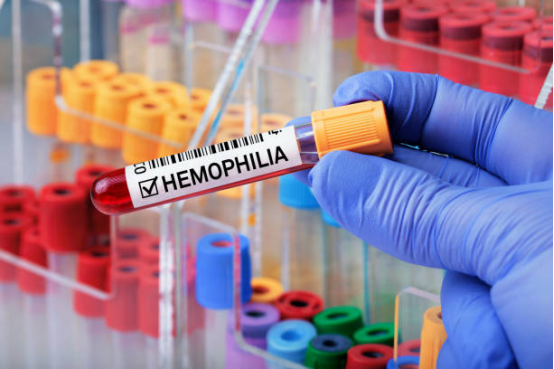Effective Treatments for Hemophilia: Understanding Your Options
Hemophilia is a rare genetic disorder that impairs the blood's ability to clot, which leads to excessive bleeding from minor injuries or even spontaneously.
Hemophilia is a rare genetic disorder that impairs the blood's ability to clot, which leads to excessive bleeding from minor injuries or even spontaneously.
This condition occurs due to a deficiency in clotting factors—factor VIII in hemophilia A and factor IX in hemophilia B. While there is currently no cure for hemophilia, various treatments are available to help manage and reduce bleeding episodes. Below, we’ll explore the primary treatment options, their effectiveness, and potential side effects.

1. Factor Replacement Therapy
What it is:
Factor replacement therapy is the most common treatment for hemophilia. It involves injecting the missing clotting factor (either factor VIII or IX) into the bloodstream. This replacement therapy can be given as a preventive measure (prophylaxis) or as needed to stop a bleeding episode when it occurs.
Effectiveness:
Factor replacement therapy is highly effective in preventing spontaneous bleeding episodes and managing active bleeds. Regular treatments can significantly enhance quality of life by reducing hospital visits and complications related to hemophilia.
Side Effects:
The primary concern with factor replacement therapy is the development of inhibitors—antibodies that can neutralize the effectiveness of the clotting factor. This is more common in individuals with severe hemophilia. Other possible side effects include allergic reactions, bruising at the injection site, and the risk of infections from contaminated clotting factor products.
2. Gene Therapy
What it is:
Gene therapy is a promising treatment option that involves inserting a healthy copy of the gene responsible for producing the missing clotting factor into the patient’s cells. This enables the body to produce its own clotting factor, potentially eliminating the need for regular factor infusions.
Effectiveness:
While still in the experimental phase, gene therapy has shown promising results in early trials. Some patients have been able to produce enough clotting factor to prevent bleeding episodes. However, long-term data on its effectiveness and safety are still being gathered.
Side Effects:
As a new treatment, the long-term side effects of gene therapy are not fully known. Short-term side effects may include fever, headache, or fatigue. Gene therapy is a one-time treatment, but its availability and suitability for all hemophilia patients remain uncertain.
3. Bypassing Agents
What it is:
Bypassing agents are used when a patient has developed inhibitors to clotting factor therapy. These agents help the blood clot by bypassing the need for the missing clotting factor. They are typically used in emergency situations or when factor replacement therapy is ineffective.
Effectiveness:
Bypassing agents can be very effective in halting bleeding during an emergency. However, they may not be as effective at preventing future bleeding episodes compared to regular factor replacement therapy.
Side Effects:
The use of bypassing agents can increase the risk of blood clots, which may lead to serious complications such as stroke or heart attack. Other side effects include allergic reactions and the development of resistance to the bypassing agents over time.
4. Clotting Factor Concentrates
What it is:
Clotting factor concentrates are concentrated forms of factor VIII or IX that can be injected directly into the bloodstream. These are used to treat severe bleeding episodes or to prevent bleeding during surgeries.
Effectiveness:
Clotting factor concentrates are highly effective in controlling bleeding episodes, especially for those with severe hemophilia. They are also used as a preventive treatment before surgical procedures or dental work.
Side Effects:
Like factor replacement therapy, clotting factor concentrates can cause inhibitors to develop. Other side effects may include allergic reactions, fever, chills, and swelling at the injection site.
5. Hemostatic Agents
What it is:
Hemostatic agents, such as antifibrinolytics, are used to help maintain blood clots and prevent their breakdown. These are often used alongside other treatments for hemophilia, especially during minor surgeries or dental procedures.
Effectiveness:
Hemostatic agents are effective in controlling bleeding episodes, particularly in those with mild or moderate hemophilia. They can also help reduce bleeding during less invasive procedures.
Side Effects:
The most common side effect of hemostatic agents is an increased risk of developing blood clots, which can lead to complications like deep vein thrombosis (DVT) or pulmonary embolism. Other potential side effects include nausea, vomiting, and headache.
Conclusion
While there is currently no cure for hemophilia, there are several treatment options available that can significantly improve the quality of life for those affected by the disorder. From factor replacement therapies to gene therapy and bypassing agents, these treatments help manage bleeding episodes and reduce complications. The best treatment for an individual depends on the severity of their condition, any inhibitors present, and other personal health factors.
It’s essential to work closely with a healthcare provider to determine the most appropriate treatment plan and to monitor for any potential side effects. With the right care and management, individuals with hemophilia can lead full and active lives.